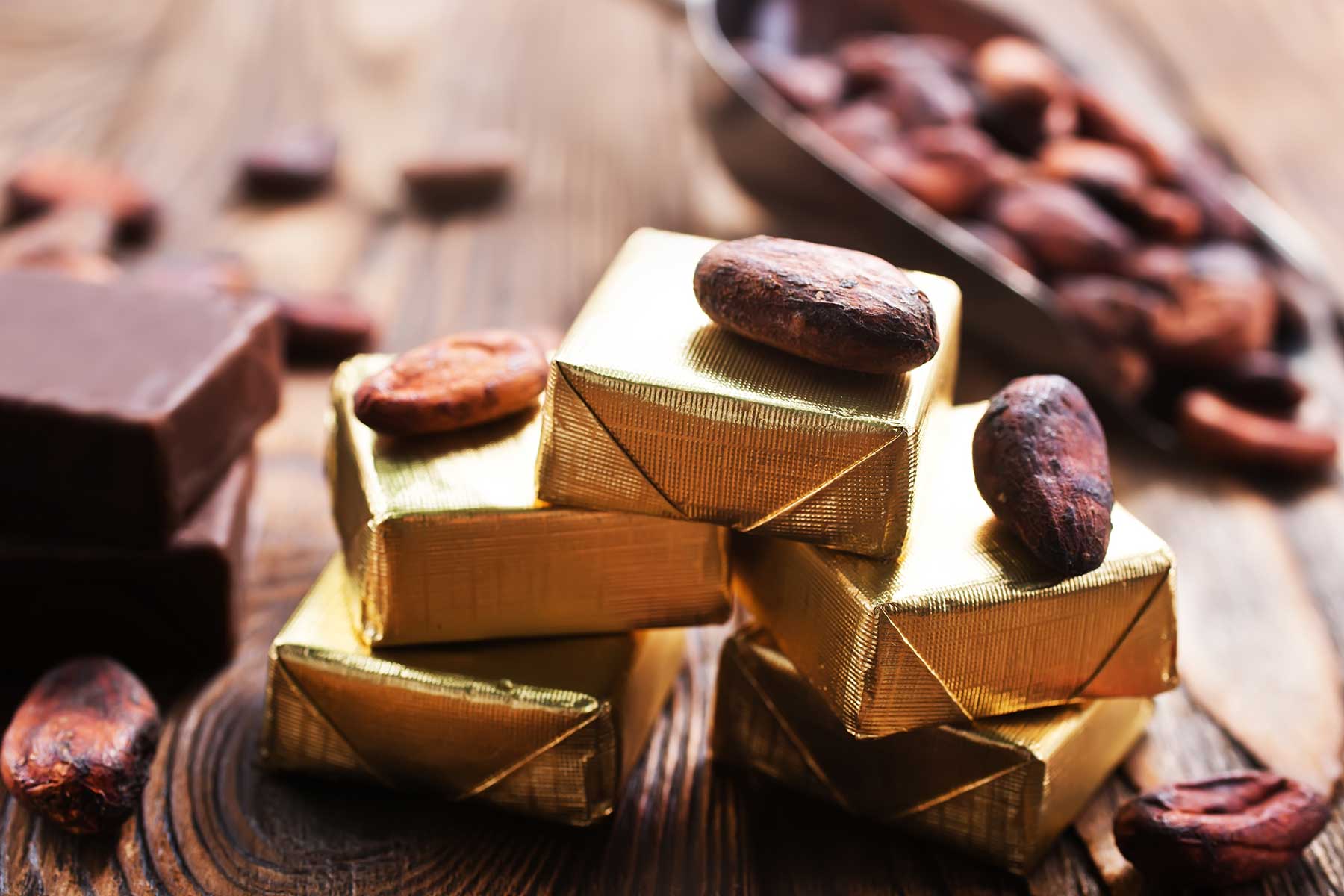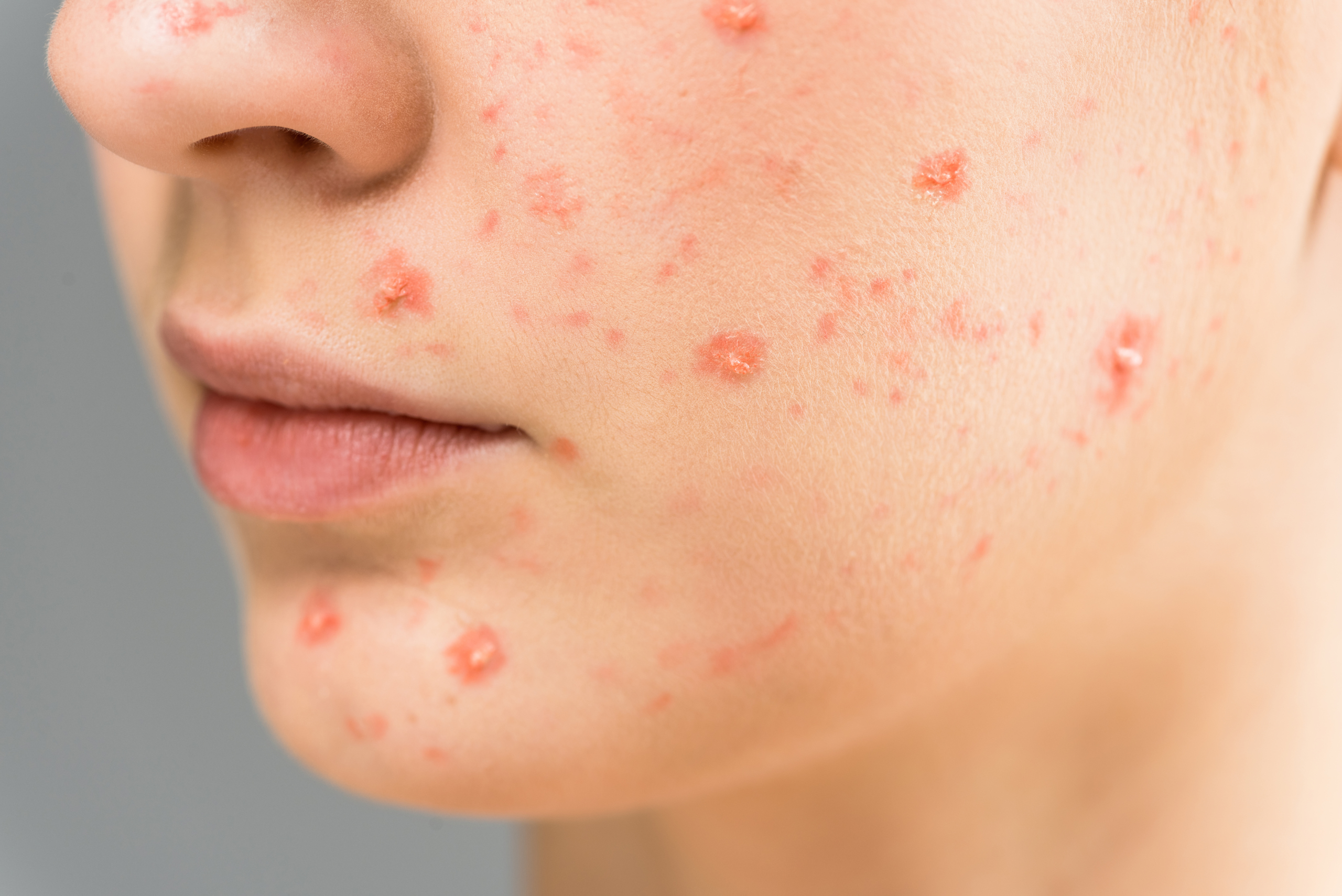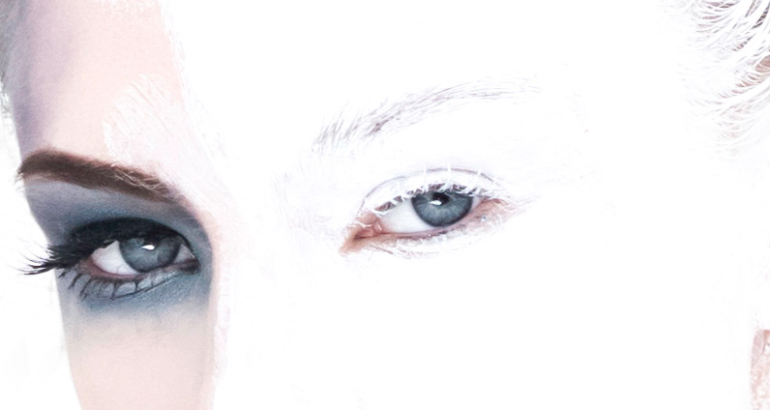- What causes Acne?
- What triggers Acne?
- What doesn’t cause Acne?
- Different types of Acne and how to treat them
- Treatments we provide for Acne
- What causes Acne Scarring?
- Different types of acne scarring and how to treat them
- How to prevent acne scarring
- Treatments we offer for Acne Scarring
- Book acne or acne scarring treatment
Acne is one of the harsh realities of skin care. Most people struggle with acne at some point in their life. One of the added issues with acne is the scarring that happens once the breakotus have cleared up. We want to help you get a handle on your acne and scarring, to do so we are going to chat about everything you need to know and how to treat your acne.
After this, you should hopefully feel less stressed knowing that there is a way to get rid of acne and acne scarring.
What causes Acne?
Acne has four main factors:
- Excess oil (sebum) production
- Hair follicles clogged by oil and dead skin cells
- Bacteria
- Inflammation
In a nutshell, acne occurs when excess oil production traps dead skin cells in skin pores, clogging the pore. When these clogged pores become infected with bacteria naturally occurring on the skin (Cutibacterium acnes). Infected pores can become inflamed, red, and painful. There are different types of acne, but more on that later.
As you may know acne usually appears on your face, forehead, chest, upper back or shoulders. The reason for this is because these areas of the skin have the most oil glands which are connected to your hair follicles.
What triggers Acne?
The factors that trigger acne are natural parts of every human body, however, there are certain elements that can worsen or aggravate acne. Those triggers are:
- Hormonal changes – During puberty, androgen hormones increase in both boys and girls. This causes the sebaceous glands to enlarge and make more sebum. Adults are not immune as hormonal imbalances throughout your life can also trigger acne. This is especially true for women who have polycystic ovarian syndrome (PCOS) or who are going through menopause.
- Various medications – Medicine that contains corticosteroids, testosterone or lithium can worsen breakouts.
- Certain foods – There is evidence to suggest that certain food groups negatively affect breakouts. These food groups include, fast food (obviously), carbohydrate-rich foods (think bread), certain dairy products and some sweets. A bad diet then can negatively affect your skin’s health.
- Stress – Due to changes in hormones, such as cortisol, being stressed can trigger extra oil production and a resulting acne flare up.
What doesn’t cause Acne?
There are a few foods or lifestyles, which have been said to cause acne. Many of these are untrue. To help you out, here are some of those myths:
- Acne is caused by dirt – The truth is that flare-ups can’t be traced to hygiene. In fact, washing too often or too vigorously can make acne worse!
- Chocolate and greasy foods make acne worse – Your diet does influence your Acne, but chocolate and certain greasy foods do not.
- Cosmetics cause acne – This is an interesting one, if you use oily cosmetics they may worsen your breakouts, but they are not a cause for the acne. So, if you are using non-oily cosmetics that don’t clog your pores and if you remove your makeup often, they won’t have a bad impact on your skin. If you are struggling with acne make sure to buy non-oily cosmetics.
Different types of Acne and how to treat them
There are many different types of acne, but what you will want to know is the 6 most common forms that you see which are:
Whiteheads (non-inflammatory)
Whiteheads occur when pores are clogged all the way through and are also known as comedones. When the length of the pore and the head of the pore are closed, a little white bump appears on top of the skin, thus the name whitehead.
Whiteheads can’t be removed by squeezing or popping them. This could instead cause scarring, so try to avoid the desire to pop them.
How to treat it
There are a variety of over-the-counter drugs that can help treat whiteheads, these include;
- Sulfur,
- salicylic acid, or
- benzoyl peroxide.
You can apply these to the whiteheads themselves or use them for an entire facial treatment. Benzoyl peroxide is probably the most effective option, while sulfur is the least harsh on your skin.
Topical retinoids, derived from vitamin A, are also effective for treating non-inflammatory acne (including whiteheads).
Blackheads (non-inflammatory)
Blackheads are also known as comedones, the difference between a blackhead and a whitehead is their colour on the surface of the skin. Unlike a closed whitehead pore, a blackhead is black in colour and the clogged pore is open at the head of the pore. The open pore allows the build up of oil and dead skin cells in the pore to oxidise giving it it’s black colour. You can get rid of blackheads by popping them but rather avoid that because it can cause scarring.
How to treat it
Treatment for blackheads is the same as whiteheads. That means you can use:
- sulfur,
- salicylic acid,
- benzoyl peroxide, or
- a topical retinoid.
Papules (inflammatory)
When oil or excess skin cells block a pore and mix with bacteria on your skin, the contents spill out which results in bacteria escaping onto the surrounding skin tissue (rather than the skin surface) causing an inflamed lesion. That inflamed lesion is a papule. Interestingly papules don’t contain any pus.
How to treat it
To treat papules benzoyl peroxide can be helpful because of its antibacterial properties. You can also use a topical retinoid, antibiotics, or birth control pills for girls. Before committing to those though, consult a dermatologist first as there can be side effects.
Pustules (inflammatory)
Pustules are similar to papules, except they contain pus. They are small red inflamed bumps with a white or yellow centre. Typically found in clusters, pustules form when a blocked pore gets infected by Cuti bacterium acne bacteria.
How to treat it
You can use the same options to treat papules and pustules. That means benzoyl peroxide, a topical retinoid, antibiotics, and in some cases birth control pills.
Important to note: Do not try pop or squeeze them, this may cause bacteria to spread. It is only safe for your doctor to drain your pustules.
Nodules (inflammatory)
Nodular acne consists of hard, flesh-coloured/red bumps deep under the skin’s surface. It is typically a result of Cutibacterium acnes bacteria causing an infection deep within a pore and can last for several months.
How to treat it
Nodules can be quite tricky to get rid of, so OTC medication doesn’t usually work. You can contact a dermatologist to help you get prescription-strength benzoyl peroxide or salicylic acid, antibiotics, retinoids, or birth control pills (for women).
If none of these options work then you may need to have the nodules drained, or use a chemical peel. You will need to have a dermatologist do these for you.
Cysts (inflammatory)
Acne cysts are large, red, inflamed and pus-filled bumps on the skin. Like nodules, they are also the result of an infection deep in the skin, however, cysts are softer than nodules because of the pus inside. Cysts are extremely painful and can burst and infect the surrounding skin. This type of acne can last for years and if left untreated can cause severe scarring.
How to treat it
The most difficult acne to treat is cystic acne. You will need to consult a dermatologist to fight cysts. They might suggest one of the following treatments:
- isotretinoin (which is an oral retinoid),
- antibiotics,
- topical retinoids,
- birth control pills (for women), or
- spironolactone (also preferable for women).
You might need a few medications to fight cysts so be patient and use the medications as recommended.
Cysts can also be removed by injecting them with steroids or having a medical procedure to drain them.
Treatments we provide for Acne
Our Skin Clinic specialises in Skin Science and can help you to treat your acne and acne scarring ( as well as other skin concerns). We can provide a range of acne & acne scarring treatments tailored to your specific skin and needs. These treatments include: chemical peels, which help the affected area to feel smoother and firmer revealing a bright, healthy glow; the Acnelan Peel which is clinically proven to help treat acne prone skin; and to help prevent oily build up in your skin, a facial is a good option.
Products we provide to Treat Acne
- Mesoestetic Acne Control Kit
- Mesoestetic Imperfection Control
- Mesoestetic Acne One
- Mesoestetic Resurfacing Peel Booster
- NeoStrata Targeted Clarifying Gel
What causes Acne Scarring?
Acne scars are usually the result of the skin failing to repair lesions on the skin caused by various types of acne (inflammatory types of acne are most likely to cause scars) . This can happen when there is a deep break in the wall of a pore. The infected material can spill out into the surrounding tissue, making a deeper lesion. The skin attempts to repair these lesions by forming new collagen fibers, but when a lesion is too deep these repairs aren’t as smooth as the original skin, resulting in scarring.
Different types of acne scarring and how to treat them
There are 4 main types of acne scarring. They are the following.
Ice pick scars
These are deep, narrow scars that extend into the dermis. They are called ice pick scars because the skin looks as if it has been pierced by an ice pick or sharp object. These scars seem to make a thin, deep hole into the skin. Some can look like a large, open pore.
They come about after an infection from a cyst or other blemish works its way to the surface. This destroys the skin tissue and leaves the scarring.
How to treat ice pick scars
To treat ice pick scars there two treatments you can look at. The first is a punch excision, during this procedure, your dermatologist takes a small tool to cut out the scar. After that the skin is glued back together to heal.
The second treatment would be punch grafting. This is done for larger and deeper scars. Similar to the punch excision the scarred tissue is removed, then however, the hole is filled with a graft of skin.
Boxcar scars
A boxcar scar is a roundish depression with steep vertical sides and has an uneven, pitted appearance. They happen when an inflammatory breakout destroys collagen, causing the tissue to be lost. The skin in that area is then left without support, this is what creates the depressed area. These scars can be superficial to severs.
How to treat boxcar scars
There are a number of potential treatments for boxcar scars. They can be treated with punch excision just like ice pick scars. There is an option for them to be treated through punch elevation, this works similar to punch grafting but instead of grafting the skin at the base of the scar is raised up, leveling the surface of the skin.
The most common treatment, though, are dermal fillers. These fillers are injected into the scar, helping raise the depressed area of the skin, evening out the area with the surrounding skin. Dermal fillers are a fast, simple procedure compared to other treatments. A negative of this treatment is that the results aren’t completely permanent. Typically the treatment lasts for 18 months to 2 years.
Another option is laser resurfacing. This treatment helps to stimulate new skin tissue and collagen to form, which improves the tone and texture of the skin.
Rolling scars
Rolling scars are rolling or wave-like depressions across the skin. They are not sharply defined, rather the skin where the scarring is looks uneven and craggy.
Rolling scars develop when fibrous bands of tissue develop between the skin and subcutaneous tissue below. The fibrous bands pull the epidermis, connecting it to the structures of the skin. The pulling of the epidermis creates the rolling or wave-like appearance on the skin.
How to treat rolling scars
The best treatment for these scars is subcision. Subcision is a surgical procedure done under local anesthesia. A scalpel is inserted parallel to the skin, cutting the fibrous base of the scar, which is pulling down the skin from below. Once that has been done, the skin looks a lot smoother.
Keloid scars
Keloids are a severe type of raised scar, that grow larger than the original wound that caused them. They can send out raised, lateral shoots that make the scar grow, and can continue to grow after the wound has healed.
These scars develop because of an overproduction of collagen. The skin continues to produce collagen because it doesn’t receive the signal to stop and that the wound has healed.
How to treat keloid scars
Treatment for keloid scars is a bit more complicated, so the best treatment will depend on your personal situation. The different treatment options can include;
- steroid (cortisone) creams,
- silicone gels,
- cryotherapy,
- tapes,
- pulsed dye laser treatments, or
- injection to shrink and flatten the scar.
When treating a keloid scar, make sure to consult a dermatologist because if treated incorrectly the skin can be aggravated and the scarring made worse.
How to prevent acne scarring
Scarring can be incredibly frustrating, as can the effort of treating them. Unfortunately, acne scarring cannot be avoided completely but there are a few ways to have as little scarring as possible. If you are looking to prevent acne scarring here is what you should do:
- Treat acne as soon as it develops
- Try reduce inflammation
- Don’t pop your pimples!
- Don’t pick at scabs
- See a dermatologist for deep breakouts or cysts
Treatments we offer for Acne Scarring
If you are struggling with acne scarring, you can always go for a chemical peel, acnelan peel or a facial. If you have already tried three or seek more visible results, we do have a few procedures that we offer for acne scarring:
- Medical Skin Needling – We use a micro-needling device that consists of 12 microneedles that are run over the skin, creating microscopic punctures which internally stimulates the skin’s natural regeneration process.
- 3D MD PRP (Dr Vampire) – Our 3D PRP MD bespoke treatment was formerly known as the Dr Vampire. This treatment uses regenerative effects that our own platelet containing growth factors have to stimulate collagen, elastin and hyaluronic acid within our skins, transforming it into a healthy radiant and more youthful-looking skin.
- Morpheus8™ – This is a non-surgical advanced technology that combines the power of radio-frequency energy with adjustable depth micro-needling as well as fractional laser treatments to address a variety of skincare problems.
Book acne or acne scarring treatment
If you are struggling with Acne or Acne scarring, we can help. Our highly trained team of skin specialists and aesthetic doctors are here to help! We provide a variety of treatments to help your acne or acne scarring. We provide a few other products that can help with your struggles with acne.
If you have any questions or want to book any treatment, please get in contact so we can help you achieve your skin dreams!.







